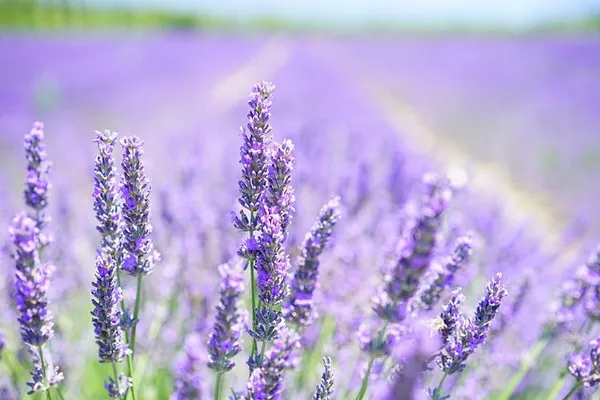The intricate dance between flowers and bees is a vital aspect of the ecosystem, contributing to both the pollination of plants and the production of honey. Bees play a crucial role in sustaining biodiversity and ensuring the reproduction of flowering plants. To create a bee-friendly garden or support local bee populations, it’s essential to understand the types of flowers that bees are attracted to. In this comprehensive guide, we’ll explore the characteristics and varieties of flowers that bees find irresistible.
Understanding Bee Attraction:
Bees are drawn to flowers primarily for their nectar and pollen. Nectar serves as a carbohydrate-rich food source for bees, while pollen provides essential proteins and nutrients. To attract bees, flowers have evolved various characteristics such as color, scent, shape, and accessibility of their nectar and pollen. Bees are particularly attracted to flowers that are rich in these resources, making them valuable partners in the pollination process.
Color Palette:
Bees are naturally drawn to specific colors, particularly shades of blue, purple, violet, and yellow. These colors are easily visible to bees, as they can perceive ultraviolet light, which humans cannot. Flowers with these hues stand out in the landscape and are more likely to attract bees. Examples of bee-friendly flowers based on color include lavender, sunflowers, coneflowers, and borage.
Fragrance:
The sweet scent of flowers is another key factor that attracts bees. Aromatic compounds released by flowers signal the presence of nectar and pollen to bees. Flowers with strong, pleasant scents, such as jasmine, lavender, and lilacs, are more likely to capture the attention of bees. Planting a variety of fragrant flowers throughout the garden can create an inviting environment for these essential pollinators.
Flower Shape:
The shape of a flower also influences its attractiveness to bees. Many bee-pollinated flowers have a tubular shape, allowing bees to access nectar with their specialized mouthparts. Examples of tubular flowers include foxgloves, penstemons, and salvias. Additionally, flowers with a flat or open structure, like daisies and asters, provide easy access to both nectar and pollen.
Bloom Succession:
Maintaining a consistent bloom throughout the growing season is important for attracting and supporting bee populations. Bees need a steady supply of nectar and pollen, so planting a variety of flowers that bloom at different times ensures a continuous food source. Early bloomers like crocuses and snowdrops provide sustenance in the spring, while late bloomers such as sedums and asters extend the feeding season into the fall.
Native Plants:
Native plants are particularly effective at attracting local bee species because they have coevolved with these pollinators over time. Native flowers are adapted to the local climate, soil, and insect populations, making them well-suited for supporting the ecological balance. Researching and incorporating native plants into your garden can significantly contribute to the health and well-being of bee populations in your area.
Top Bee-Friendly Flowers:
Lavender (Lavandula spp.):
Known for its aromatic flowers, lavender is a favorite among bees. Its spikes of purple flowers are not only visually appealing but also rich in nectar. Planting lavender in your garden not only attracts bees but also adds a fragrant and calming element to the landscape.
Sunflowers (Helianthus spp.):
With their large, vibrant blooms, sunflowers are a beacon for bees. The central disk of the sunflower is laden with tiny florets that provide abundant pollen and nectar. Sunflowers are not only a visual delight but also a valuable food source for bees during the summer months.
Coneflowers (Echinacea spp.):
Coneflowers, with their distinctive cone-shaped centers and colorful petals, are highly attractive to bees. These hardy perennials bloom from late spring to early fall, offering a long-lasting supply of nectar and pollen. The variety of coneflowers available, such as purple, pink, and white, allows for a diverse and visually appealing garden.
Borage (Borago officinalis):
Borage is a unique herb with brilliant blue, star-shaped flowers that bees find irresistible. The plant is easy to grow and blooms profusely, making it a valuable addition to any bee-friendly garden. Borage not only attracts bees but also serves as a companion plant, enhancing the growth of nearby vegetables.
Bee Balm (Monarda spp.):
As the name suggests, bee balm is a magnet for bees. Its tubular flowers, available in various colors including red, pink, and purple, provide a rich source of nectar. Bee balm is not only a beautiful addition to the garden but also a versatile herb with aromatic leaves that can be used for teas and culinary purposes.
See Also What Plants Attract Butterflies
Conclusion:
Creating a bee-friendly garden is a rewarding endeavor that not only enhances the beauty of your outdoor space but also contributes to the well-being of these essential pollinators. By understanding the factors that attract bees, such as color, fragrance, flower shape, bloom succession, and the use of native plants, you can design a garden that provides a continuous and diverse food source for bees throughout the seasons.
By incorporating bee-friendly flowers like lavender, sunflowers, coneflowers, borage, and bee balm, you can create a haven for bees in your own backyard. Remember that a healthy bee population contributes to the pollination of crops, the production of honey, and the overall biodiversity of our ecosystems. With these insights, you can play a vital role in supporting and preserving bee populations for generations to come.


